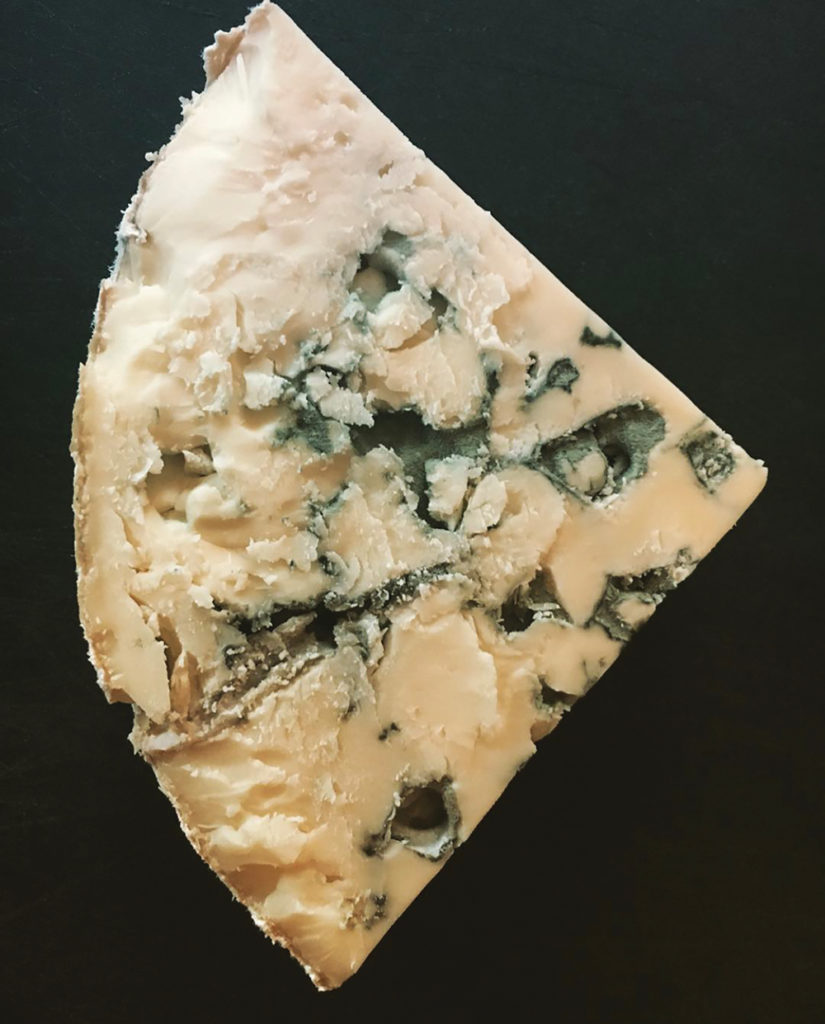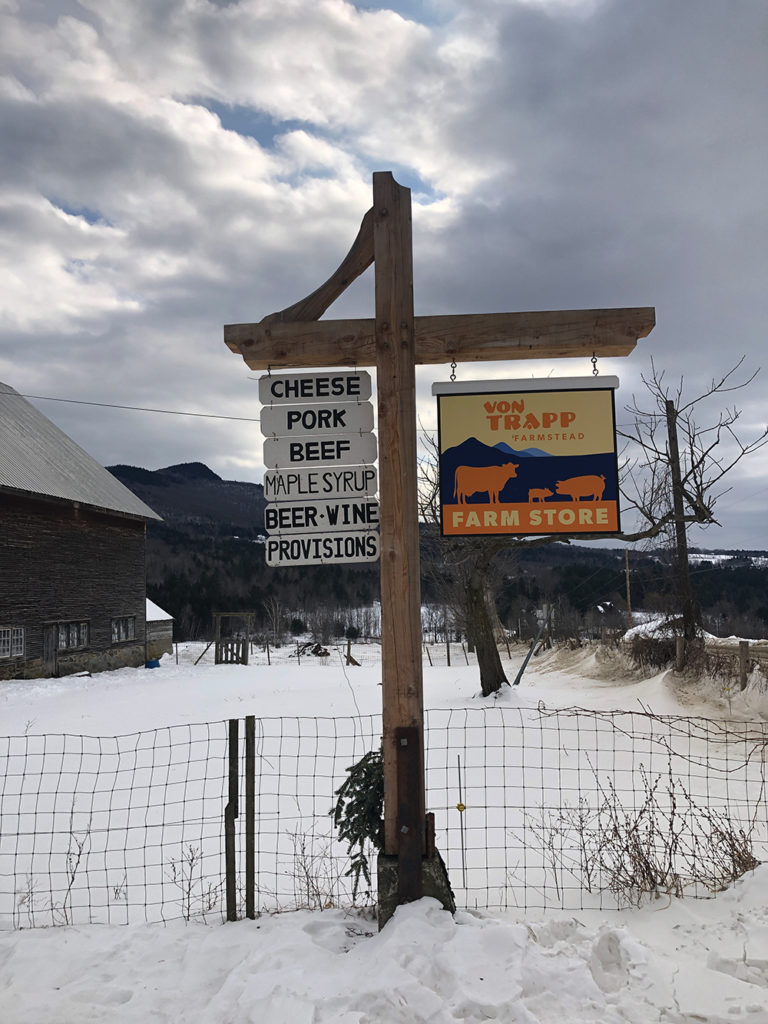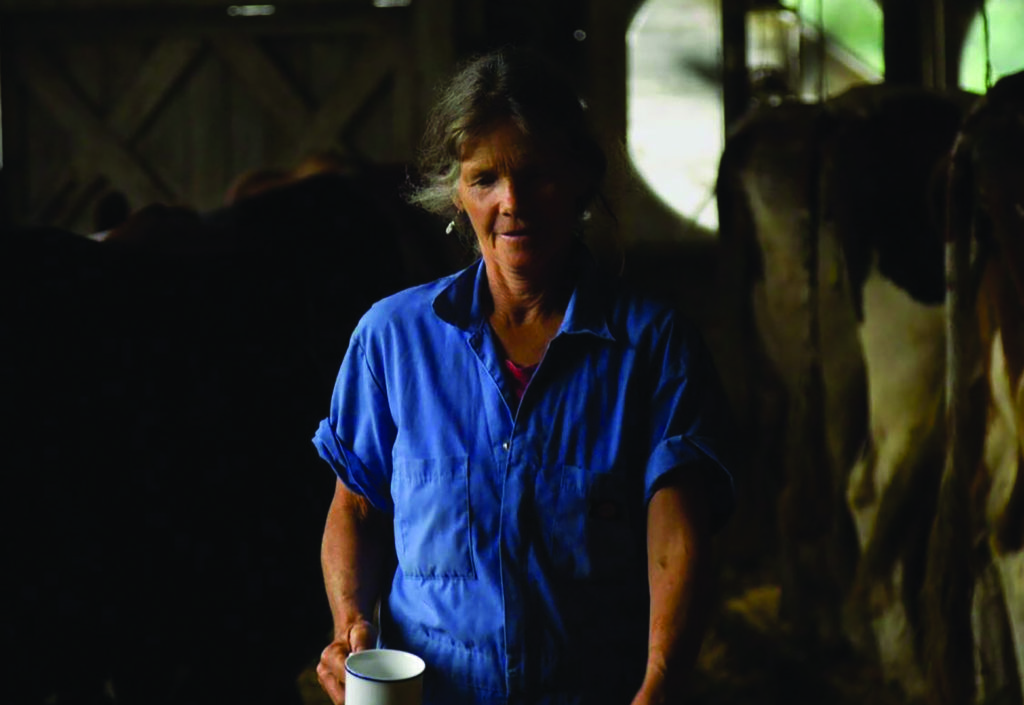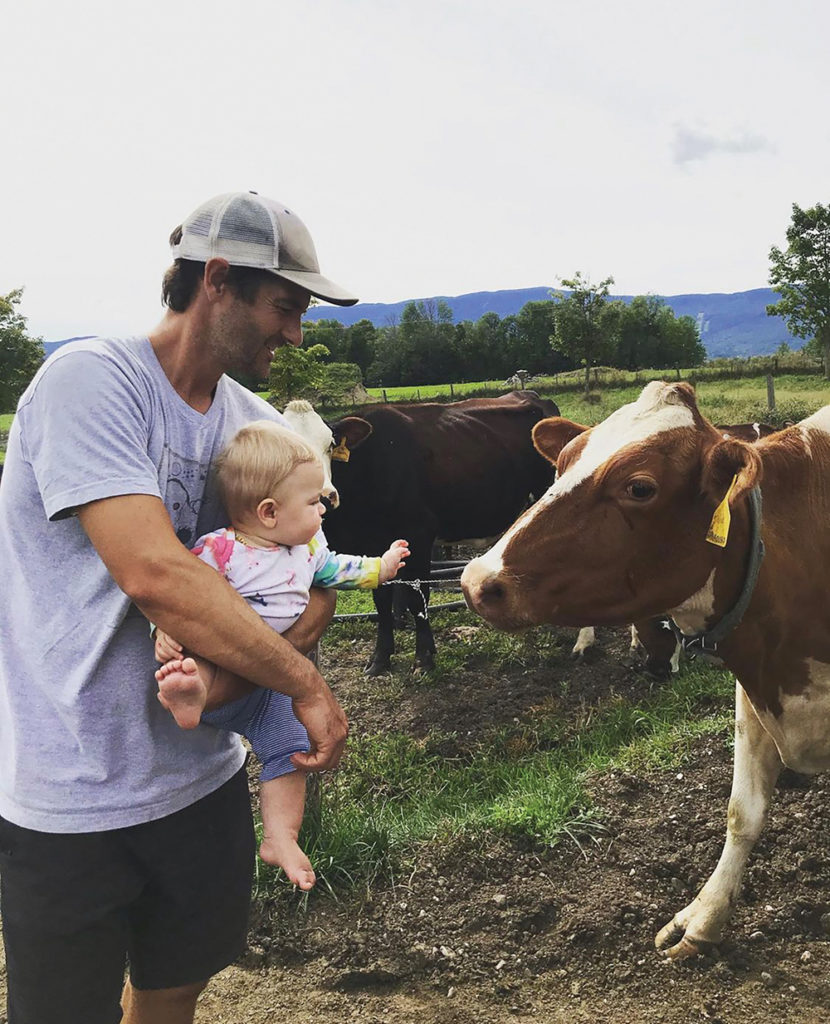
With their signature cheeses, a third generation of Von Trapps preserves the family dairy farm
Vermont winter is showing its true colors when I pull into Von Trapp Farmstead in Waitsfield on a late January Monday. A thick blanket of clouds is broken here and there by bits of blue. Outside the barn, cows from the farm’s mix of Normande, Montbeliarde, Ayrshire, and Jersey herd are resting on hay spread over the heavy snowpack. The peak of Mt. Alice rises behind them, purple/black against the mottled sky. Inside the small creamery, Molly Semler stands on a platform stirring a vat of pale-yellow curds for Oma, one of Von Trapp Farmstead’s four organic, cow’s milk cheeses.
“Right now, we’re cutting the curd a little smaller because winter milk has more fat and protein,” Molly says as she gently pushes a white plastic shovel through the full vat. After stirring them by hand, she attaches mechanical arms, which will further break down the curds until they are just the right texture. “You have to make seasonal changes in how you’re making the cheese so that the end product stays consistent.” The smaller curds are cut, the more liquid is released, which helps to give Oma—a washed rind tome—its signature rich and creamy paste. She gives me a handful of curds to taste—soft and velvety, they hint of the luscious cheese they will become.



Molly joined Von Trapp Farmstead in 2013, after studying cheesemaking at the University of Vermont’s Institute for Artisan Cheese and honing her chops with the cheesemakers at Shelburne Farms and others. Sebastian von Trapp and his brother Dan launched the creamery in 2009, using milk from the herd kept by their parents, Kelly and Martin von Trapp. The farm in Vermont’s Mad River Valley has been in the family since the late 1950s, when Martin’s parents, Erika and Werner von Trapp, known by their grandchildren as Oma and Opa, moved their six children to the property and began a dairy farming operation, which they maintained until 1979. (Werner, one of the famed Trapp Family Singers, was depicted in The Sound of Music as Kurt.) “Oma was a super advocate for continuing to farm and the cheese business,” says Molly. “She used to joke, ‘Why did you name a stinky cheese after me?’”

Sebastian has joined her in the creamery and is preparing to mold his grandmother’s namesake cheese. He opens a valve near the bottom of the vat, and a tube pumps curds into a metal tray atop a rack of round plastic molds. With his right on the valve, he uses his left hand to control the flow of curds, guiding them into the molds before moving the tray to another rack and continuing the process. (The whey, which drains into a trough underneath the racks will be used to feed the farmstead’s pigs; the delicious pork is among the local products sold at the adjacent farm shop.)
“We both had an urge to do something for ourselves and on the farm, and cheesemaking was something that made sense. It was a way to transform the family business and take it to the next generation.”
After sitting overnight, the cheeses will be loaded onto a cart and lowered through a hatch in the creamery floor to the basement level, where they will be salt brined in a machine that Sebastian designed. Four days after Oma is made, it is shipped to the Cellars at Jasper Hill Farm—a little over 50 miles north—where it is aged for a total of 10 to 14 weeks.



While the creamery employs four others, on Mondays, it’s just Molly and Sebastian, their movements gracefully in sync amid the clatter of production. After Dan decided to move on from the cheesemaking operation, Marisa Mauro from nearby Ploughgate Creamery suggested that Sebastian reach out to Molly. The two eventually fell in love and are now partners in life—raising twin toddlers—as well as in cheese. “Molly and I becoming a couple is part of the reason why we’re still in business,” Sebastian says. “We do this together, and I don’t know if I could do this on my own or would want to.” They recently built a house in a corner of the farmland and are happily living a rural life that Sebastian thought he would leave behind.
“Growing up I didn’t think I’d have anything to do with the farm when I got older,” he says. “I wanted to go off to college and get a good paying job … but after working in the software industry for about five years I really missed the farm.” Dan, who was working as a timber framer, was also looking for a change, and with fluid milk prices having dropped, their parents’ dairy operation was struggling. “We both had an urge to do something for ourselves and on the farm, and cheesemaking was something that made sense. It was a way to transform the family business and take it to the next generation.”


Knowing little about cheesemaking, Sebastian sought out Vermont makers to learn from, including Mateo and Andy Kehler at Jasper Hill Farm, who were planning to build their cellars. “The timing was good; they wanted producers to work with and we were the first,” says Sebastian of the collaboration for Oma, which has won numerous awards, including Gold at the 2018 World Cheese Awards.
Von Trapp Farmstead’s other three cheeses—also award winners—age in place, in two vaults on the lower level of the creamery. Mt. Alice, a bloomy rind wheel, is the youngest, brined and then aged for a minimum of three weeks. Mad River Blue and Savage, the latter a Vermont Alpine-style cheese that Molly describes as “a marriage between a cheddar and a traditional alpine like Comté or Gruyère,” are dry salted. The blue is aged for about three months, and Savage, which is named for Samuel S. Savage, who settled the land in the 1700s, is aged for eight to 12 months.
For a small operation to make four styles of cheese is a considerable amount of work, but “we can’t give any of them up,” says Molly. “Every day has a different flow to it; today I was dry-salting Mad River Blue and Savage that were made on Thursday and Friday. Tomorrow we’ll be taking care of Oma while wrapping Alice that’s just bloomed. People who work with us get a very well-rounded cheese experience.” They also get to be part of an enduring legacy.



